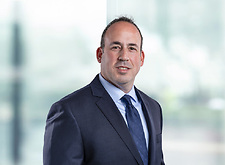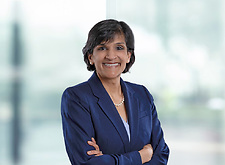Stakeholders Await Key Electric Vehicle Order from New York’s Public Service Commission
The Comment Period has closed on the New York Department of Public Service (“DPS”) Staff’s “Make Ready” proposal for eliminating current barriers to electric vehicle (“EV”) adoption in New York, and setting the stage for a forthcoming New York Public Service Commission (“Commission”) Order. According to the New York League of Conservation Voters, there were around 47,000 EVs registered in New York (less than 1% of state vehicles) as of February 27, 2020, and only 1,451 charging stations and 3,618 public EV plugs, as of October 2019. With this new proposal from DPS Staff, New York is poised to significantly increase those numbers and take a major step forward towards decarbonizing the transportation sector.
On January 13, 2020, a Department of Public Service (“DPS”) Staff Whitepaper proposed a $582 million statewide utility-supported “Make-Ready Program” providing incentives for developing light duty Electric Vehicle Supply Equipment and Infrastructure (“EVSE&I”). As noted in the Whitepaper, with “the low penetration of EVs on the road today, it is difficult to recoup installation costs from charging revenues due to low station utilization.” The Whitepaper acknowledged, for example, that a typical direct current fast charging (“DCFC”) station is not expected to be profitable over the next ten years. Accordingly, the State faces a chicken-or-the-egg problem that the program aims to solve: lack of charging infrastructure inhibits EV adoption, and lack of EV adoption inhibits deployment of charging stations.
The Make-Ready Program would improve EV charging station economics by covering up to 90 percent of the costs to “make-ready” an EV charging site. In so doing, it would support the infrastructure needed to meet New York’s goal of deploying 850,000 zero emission vehicles by 2025. According to the DPS Staff, by “stimulating station development now and assuaging range anxiety, drivers will be more likely to transition to EVs early, accelerating achievement of the State’s goals and realizing the benefits associated with EVs.”
This Whitepaper follows on a prior Commission Order that established utility programs that provide for payments, on a per-plug basis, to developers of new, “publicly accessible” DCFC stations. That Order notably declined to allow EV chargers to qualify for non-demand-based rates.
In February 2020, the Commission requested comments on the Whitepaper and posed a series of questions for stakeholders to consider. The EV Industry Stakeholder Coalition (“Coalition”), a group including CALSTART, the Environmental Defense Fund (“EDF”), the Port Authority of New York and New Jersey, Tesla, BYD Motors, Chargepoint, EVgo and others, recommended changes to the proposed Make Ready program, but also expressed broader concerns about the lack of progress in removing other barriers to EV adoption, especially in the area of rate design. Noting the modest growth of EVs in the two years since the Commission launched the EV proceeding, the Coalition argued, “Significant utility investment, much larger than what is envisioned in the Staff Whitepaper, will be necessary to increase the trajectory of EV adoption in New York.”
In addition to the design and shape of the Make Ready incentive, stakeholder comments addressed the following issues concerning EV adoption in New York.
Rate Design
The Whitepaper did not propose any modification to the existing Commission policy preserving traditional cost-of-service based rate design. The Coalition urged the Commission to develop “EV charging rates for residential and commercial EV charging applications that encourage EV adoption by all types of customers.” High demand charges on fast charging dispensers, especially in the Con Edison territory, could significantly hamper deployment. “A single charging session,” according to Electrify America’s filing, “can cause an EV charging company to absorb a significant demand charge for a high-power, customer-friendly charging experience.”
Though the Commission had rejected earlier proposals for a demand charge holiday, stakeholders urged the Commission to consider other forms of rate reform, including technology-neutral low load factor rates. According to the Coalition, “[I]f New York were to provide optional rates that were well aligned with grid constraints and accommodate the low load factor of EV charging this could remove barriers to EV adoption by various types of users.” Thus, rate design remains a potentially significant barrier to increased EV penetration.
Incentives for Medium and Heavy Duty Vehicles/ Serving Economic Justice Communities
DPS Staff’s proposal excludes incentives for medium, heavy-duty vehicles (“MHDV”), as well as light duty fleet electrification. Rather, DPS Staff anticipates that “issues of assuring adequate and useful charging infrastructure for medium and heavy-duty vehicles types will be addressed expeditiously in the open EVSE&I proceeding.”
In their comments, the Coalition urged the Commission to outline a process for utilities to immediately roll out complementary programs within the next year to serve medium- and heavy-duty vehicle charging applications and commercial fleets left out of the Staff proposal.”
The exclusion of MHDV-serving infrastructure also was challenged by parties focused on serving Economic Justice (“EJ”) communities, one of the significant criticisms of the generally well-received proposal. The City of New York’s comments were typical, noting the Whitepaper’s proposal that “20 percent of each utility’s publicly accessible DCFC Make-Ready program budget be directed to stations within 10 miles of a disadvantaged community” would not be effective because “the majority of low income residents in New York City likely do not drive, but instead rely on public transit and other means of transportation.” Thus, “investments in fleet electrification likely would have a greater impact on EJ communities than the current rule as proposed.”
Other comments were more direct, with EDF stating, “the decision to exclude charging infrastructure for medium and heavy duty vehicles from the Whitepaper is bewildering.”[1] As EDF explained, “completely eliminating the tailpipe emissions of trucks, transit buses, and school buses that operate in and near [EJ] communities” would do far more to improve public health and save lives than siting charging infrastructure for light-duty vehicles in or near these communities.[2]
Utility/NYPA Ownership of EVSE&I
In keeping with the Renewing the Energy Vision framework, DPS Staff saw “no compelling reason to recommend modifying Commission policy on utility ownership of DER as it relates to EV chargers.” However, Staff noted, as adoption increased, utilities potentially could own infrastructure where there is a market failure. The Joint Utilities also urged the Commission to allow for utility-ownership of charging infrastructure in light of COVID-19.
The New York Power Authority (NYPA) submitted comments in support of the Make Ready plan, but urged Staff to revise the eligibility criteria for EVSE&I developers to include public entities, like NYPA. According to NYPA, deploying 850,000 EVs by 2025 requires an “all hands on deck” approach in which NYPA would work collaboratively with the private sector.
Other commenters supported Staff’s recommendation to limit the Make Ready incentive on grounds that “EV charging in New York should be built by private developers engaged in a competitive market.” Noting that NYPA already has been authorized to spend $250 million in ratepayer funds through the EVolve NY program, EVgo argued that as an incumbent, NYPA’s participation would be “inconsistent with the REV Framework and contrary to the intent of the make-ready program, which seeks to catalyze third party investments.”
Interconnection
Currently, each utility processes EV charging infrastructure applications as new service requests, with unique site and system impacts, and in some cases the infrastructure interconnection is likely to require system upgrades. This lack of standardization, stakeholders observed, could cause delays as the number applications increases.
DPS Staff recommended that the Commission direct the Joint Utilities to develop a web-based application submittal process that also provides applicants with updated information regarding the status of their project. This Interconnection On-Line Application Portal would be similar to those established for interconnecting distributed energy resources under the Standardized Interconnection Requirements. The Coalition supported a more streamlined interconnection process, stating that a “timeline of 90 business days [from] initial assessment to energization has proven achievable in several jurisdictions.”
Next Steps
With the closure of the Comment Period, Stakeholders will now await an order from the Commission authorizing the Make Ready program and addressing the myriad issues raised during the proceeding. Other issues may be deferred; rate design issues, for example, are unlikely to be resolved by the upcoming Order. The Commission could also create one or more Working Groups to build a record for future decision-making. The Metropolitan Transportation Authority, for instance, called for “the creation of a Working Group for MHDV Fleet EVSE&I and have rate design be one of the topics for consideration by that working group.”[3]
To learn more about how future changes to Electric Vehicle policy may affect your business, please contact Daniel Spitzer (716.848.1420), or any other member of Hodgson Russ’s Renewable Energy Practice.
[1] Case 18-E-0138, supra, Initial Comments of the Environmental Defense Fund (Apr. 27, 2020) (“EDF Comments”), at 4.
[2] Id. at 8-9.
[3] Case 18-E-0138, supra, Reply Comments of the MTA (May 11, 2020), at 5.
Featured
- Partner
- Partner
- Partner
- Partner
- Partner
- Partner
- Partner
- Partner
- Senior Associate
- Partner
- Partner
- Co-Chair of the Firm, Partner
- Partner













